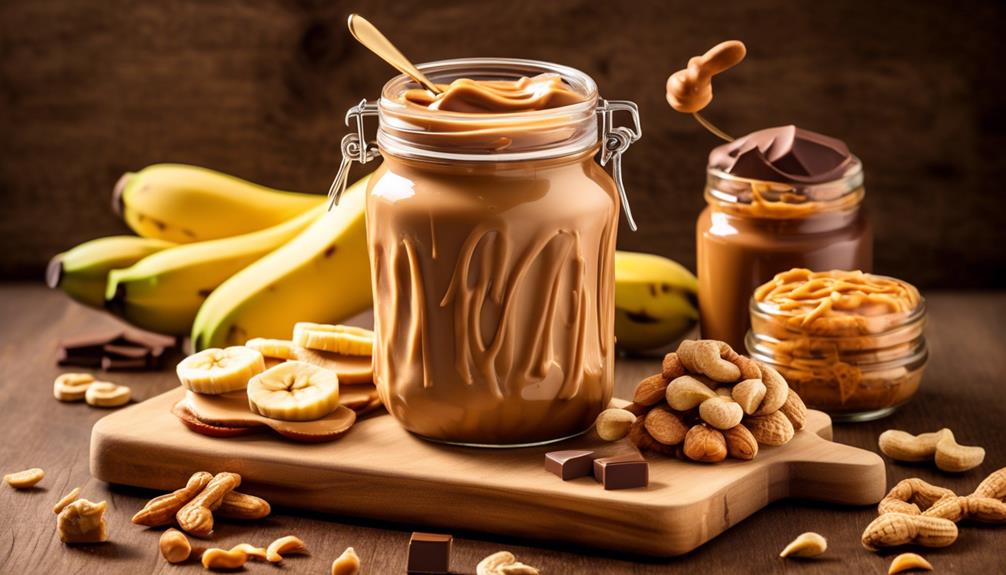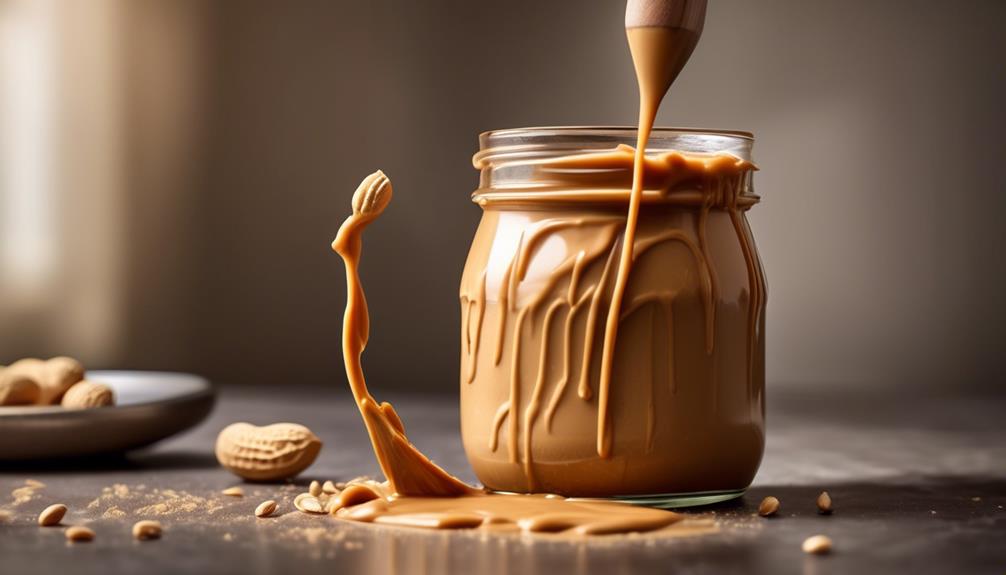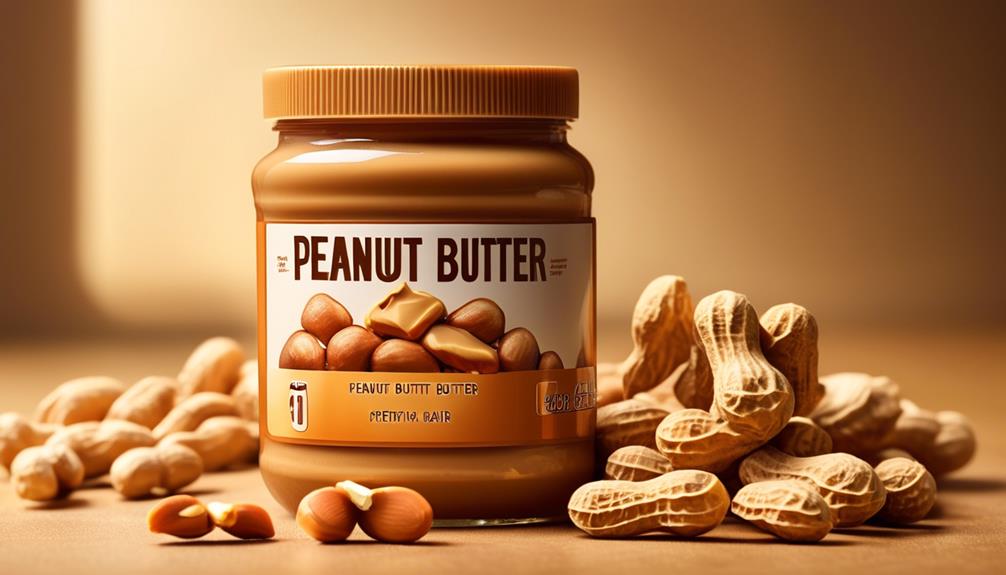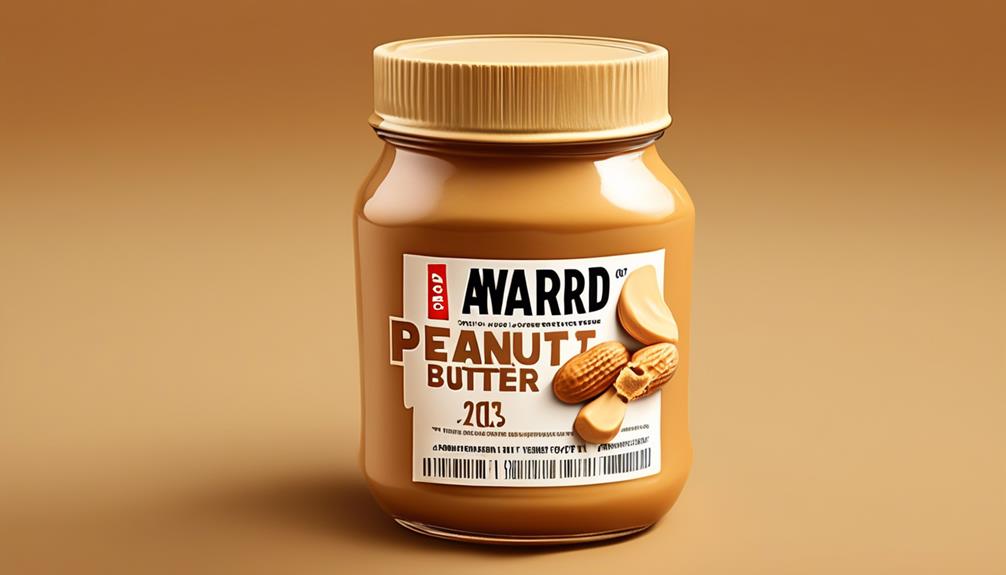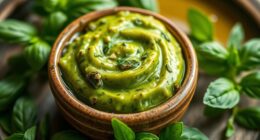We've all experienced the disappointment of our favorite snacks being suddenly discontinued, and Peanut Butter Twix is no exception.
The absence of this beloved candy bar has left many wondering why it vanished from shelves. While the official reason has been revealed, there are likely underlying factors that contributed to its discontinuation.
Let's explore the complexities surrounding the departure of Peanut Butter Twix and uncover the various elements at play in this decision.
Key Takeaways
- The return of Peanut Butter Twix generated great excitement among fans, demonstrating the loyalty and enthusiasm of its consumer base.
- Discontinued products with a dedicated fan base have the potential for successful performance, as evidenced by the resurgence in sales of Peanut Butter Twix.
- Twix's effective use of social media and understanding consumer preferences are key factors contributing to the remarkable consumer response.
- Supply chain disruptions, transportation delays, and inventory management problems were some of the challenges leading to the discontinuation of Peanut Butter Twix, highlighting the importance of optimizing manufacturing processes and distribution logistics.
The History of Peanut Butter Twix
After the successful introduction of the original Twix in 1967, the history of Peanut Butter Twix began with its launch in the United States in 2007, marking a significant expansion of the Twix product line. This limited edition variant quickly gained a dedicated following due to its unique blend of smooth peanut butter, crunchy cookie, and creamy milk chocolate, offering a delightful twist on the classic Twix experience.
Peanut Butter Twix's arrival in 2007 was met with enthusiasm from candy enthusiasts, who embraced the new flavor as a welcomed addition to the Twix family. Its popularity grew steadily, becoming a sought-after treat for those with a penchant for the delightful combination of peanut butter and chocolate.
The introduction of Peanut Butter Twix in 2007 was a defining moment in the brand's history, showcasing its ability to innovate and cater to evolving consumer tastes. The limited edition status of Peanut Butter Twix added to its allure, creating a sense of exclusivity that further captivated fans, making its recent return to the candy aisles an eagerly awaited event.
Ingredients and Flavor Profile

As we explore the ingredients and flavor profile of the beloved Peanut Butter Twix, it becomes evident that its unique blend of sugar, wheat flour, and palm oil creates a delightful crunchy cookie base.
The creamy texture and rich chocolate flavor are achieved through the inclusion of skim milk and cocoa butter, making it a decadent treat with 250 calories per serving.
Understanding the flavor combination and its alignment with consumer demand sheds light on the bar's appeal and the impact of its discontinuation.
Flavor Combination
The flavor combination of Peanut Butter Twix encompasses a rich blend of peanut butter, caramel, and chocolate, complemented by a crunchy cookie base, resulting in a distinctive and indulgent taste experience.
The peanut butter flavor adds a creamy and nutty dimension, harmonizing with the sweet, buttery caramel and the smooth, rich chocolate.
The crunchy cookie base provides a satisfying texture that balances the creamy and soft elements, creating a multi-dimensional sensory experience.
This combination of flavors and textures has made the Peanut Butter Twix a beloved treat for many, offering a perfect balance of sweet, salty, and creamy notes.
The indulgent flavor profile has contributed to the popularity of Twix bars, making them a go-to choice for those seeking a delicious and satisfying snack.
Consumer Demand
Despite experiencing challenges in supply, the return of Peanut Butter Twix has elicited great excitement among fans, highlighting the strong consumer demand for the product.
Disappointment was evident during the period when Peanut Butter Twix was difficult to find after its discontinuation. Twix addressed people's concerns about the unavailability of Peanut Butter Twix on their official Twitter page, further underscoring the high consumer demand for the product.
The limited availability of Peanut Butter Twix is evidenced by the muted traction of the #FoundNewTWIX hashtag, suggesting challenges in meeting consumer demand for the product.
The fervent response to the return of Peanut Butter Twix underscores the enduring appeal of its flavor profile and ingredients, demonstrating the unwavering loyalty and enthusiasm of its consumer base.
Sales Performance and Market Trends

Reflecting a strong consumer demand for the product, the resurgence in sales of Peanut Butter Twix has underscored the potential for successful performance through the revival of discontinued products with a dedicated fan base. Market trends in the confectionery industry indicate that nostalgia-driven marketing and limited edition releases can significantly boost sales and consumer engagement. The availability of Peanut Butter Twix on e-commerce platforms like Amazon also aligns with the growing trend of online sales for niche and limited edition products in the candy market.
Twix's effective use of social media, particularly the #FoundNewTWIX hashtag, demonstrates the importance of digital marketing strategies in engaging consumers and increasing product visibility. This approach has contributed to the remarkable consumer response following the return of Peanut Butter Twix.
The successful resurgence of Peanut Butter Twix's sales highlights the potential for discontinued products, especially those with a dedicated fan base, to thrive in the market. The confectionery industry's response to the revival of Peanut Butter Twix emphasizes the significance of understanding consumer preferences and leveraging nostalgia to drive sales performance.
Production and Supply Chain Challenges

We've observed that production and supply chain challenges can have significant impacts on product availability.
Ingredient shortages, manufacturing disruptions, and distribution issues all play a role in these challenges.
Fluctuating demand and unexpected disruptions further complicate the supply chain, underscoring the importance of collaborative efforts to address these issues.
Supply Chain Issues
Amidst ongoing supply chain issues, delays in production, shortages of raw materials, and distribution challenges have significantly impacted the availability of various products in the market.
- Production Delays: Supply chain issues have led to delays in the production of certain products, impacting their availability in the market.
- Raw Material Shortages: Shortages of essential raw materials have disrupted the manufacturing process, affecting the production volume of goods.
- Distribution Challenges: Supply chain issues have caused distribution challenges, leading to difficulties in getting products to retail shelves and ultimately to consumers.
These challenges haven't only affected the availability of Peanut Butter Twix but have also impacted a wide range of products across the industry.
It's essential for companies to adapt and find innovative solutions to navigate through these supply chain issues to ensure consistent product availability for consumers.
Production Challenges
The impact of supply chain issues on product availability has spurred the need to address the production challenges and supply chain disruptions affecting the industry.
The production challenges faced in the Peanut Butter Twix (TWIX PB) include sourcing high-quality peanuts, maintaining consistent supply, and managing production costs.
Historically, fluctuations in peanut harvests have impacted the availability and pricing of this key ingredient, leading to production challenges for peanut butter-based products like TWIX PB.
Additionally, ensuring the quality and safety of peanuts throughout the supply chain presents ongoing challenges.
Furthermore, the complex nature of global supply chains has made it difficult to predict and mitigate potential disruptions, further complicating production planning.
These factors have collectively contributed to the production challenges and supply chain disruptions that have affected the availability of Peanut Butter Twix.
Distribution Problems
Distribution challenges in the confectionery industry can significantly impact the availability of products on retail shelves, leading to consumer frustration and limited access to popular treats. When it comes to the production and supply chain of Peanut Butter Twix, several factors can contribute to distribution problems.
- Supply chain disruptions and raw material shortages can lead to delays in production and distribution.
- Logistical issues such as transportation delays and inventory management problems can hinder the smooth flow of products to retailers.
- Fluctuating product availability due to production and supply chain challenges can make it difficult for consumers to find Peanut Butter Twix consistently in stores.
Addressing these challenges may require companies to optimize manufacturing processes, secure alternative suppliers, and enhance distribution logistics to ensure a consistent supply of Peanut Butter Twix and other confectionery products.
Consumer Feedback and Demand

After analyzing consumer feedback and demand, it became evident that the decision to discontinue Peanut Butter Twix was met with disappointment and a notable decrease in sales. Many loyal customers expressed their dissatisfaction with the discontinuation of their favorite treat, stating that they preferred the unique combination of peanut butter and chocolate in Twix. Additionally, there was a surge in online petitions and social media campaigns urging the return of Peanut Butter Twix, indicating a strong demand for the product. The table below provides a summarized view of the consumer feedback and demand data.
| Consumer Feedback and Demand |
|---|
| High level of disappointment |
| Notable decrease in sales |
| Online petitions for its return |
The consumer feedback and demand clearly demonstrate the strong attachment consumers had to Peanut Butter Twix and the tangible impact its discontinuation had on sales. Understanding this feedback and demand is crucial for any future product decisions, highlighting the importance of listening to the consumer base and adapting to their preferences.
Branding and Marketing Strategies

Using thorough research and industry trends, we can understand how branding and marketing strategies play a crucial role in establishing a unique presence in the consumer's mind.
- Building a strong brand identity: Effective branding involves creating a distinctive name, logo, and image that resonates with consumers, setting the product apart from competitors. In the case of Peanut Butter Twix, the branding strategy for this discontinued product likely aimed to differentiate it from other Twix varieties and other peanut butter products in the market.
- Targeted marketing efforts: Successful marketing strategies are tailored to meet the needs and preferences of the target audience. It's crucial to understand consumer behavior and use this knowledge to develop marketing campaigns that resonate with the audience. For Peanut Butter Twix, the marketing strategy may have focused on appealing to peanut butter enthusiasts and chocolate lovers.
- Consistency and innovation: Consistent branding and innovative marketing strategies are essential for staying relevant and capturing consumer interest. With the discontinuation of Peanut Butter Twix, it's possible that the brand faced challenges in maintaining consumer interest or adapting to changing market trends.
Competition and Product Portfolio

Understanding the competitive landscape and effectively managing product portfolios are crucial for companies striving to maintain a strong market position and meet evolving consumer preferences. In the case of the discontinuation of Peanut Butter Twix, competition in the market played a significant role.
The confectionery industry is fiercely competitive, driving companies to constantly innovate and diversify their product portfolios to cater to a wide range of consumer tastes. Companies strategically manage their product portfolios to maintain a competitive edge and adapt to changing market dynamics.
A well-managed product portfolio enables companies to navigate consumer demands and preferences effectively, ensuring sustained market relevance. By understanding the competitive landscape, companies can position their products strategically within their portfolio, driving innovation and meeting the evolving needs of consumers.
Therefore, effective competition and product portfolio management are integral not only for adapting to market changes but also for driving consumer engagement and loyalty. In this context, the decision to discontinue Peanut Butter Twix may have been influenced by the need to streamline the product portfolio or to make way for more competitive offerings.
Decision-Making Process and Discontinuation

Regrettably, the discontinuation of Peanut Butter Twix stemmed from supply challenges on the production line, causing disappointment among loyal fans. The decision-making process leading to the discontinuation involved several key factors:
- Production Line Issues: Supply challenges on the production line resulted in the unavailability of Peanut Butter Twix, ultimately leading to its discontinuation. These challenges may have included sourcing specific ingredients, production capacity issues, or quality control issues.
- Consumer Concerns: Twix officially announced the return of Peanut Butter Twix in response to consumer concerns and disappointment. This indicates that consumer feedback and demand played a crucial role in the decision-making process.
- Limited Availability: Despite the announcement, the availability of Peanut Butter Twix is currently limited, with some fans resorting to purchasing it in bulk online. This limited availability may be due to ongoing production challenges or a phased rollout in select markets.
The decision-making process and subsequent discontinuation of Peanut Butter Twix highlights the delicate balance between production challenges, consumer demand, and the brand's ability to meet customer expectations.
Frequently Asked Questions
Was Peanut Butter Twix Discontinued?
Yes, Peanut Butter Twix was discontinued due to supply challenges earlier this year. However, the flavor made a comeback in July after being officially announced.
Discontinuation caused disappointment among fans and led to difficulty in finding the candy bars. Twix addressed people's concerns about the unavailability of Peanut Butter Twix on their official Twitter page.
Now, Peanut Butter Twix is officially back on candy aisles nationwide, but availability may vary depending on location.
Do They Make PB Twix?
Yes, they make Peanut Butter Twix! It's back after a temporary hiatus, and fans are ecstatic.
The return of this delightful treat has sparked excitement and a frenzy to find it in stores. The creamy peanut butter, crunchy texture, and rich milk chocolate create a uniquely satisfying flavor.
Keep an eye out for it in select stores or consider ordering online. The hunt for Peanut Butter Twix is on! #FoundNewTWIX
Why Is There Only Left Twix?
We're thrilled to share that Peanut Butter Twix is making a comeback, and we couldn't be more excited!
The return of this beloved flavor is a result of addressing supply challenges and fan demand.
The availability of Left Twix versus Right Twix is part of our marketing strategy, adding a fun twist to the Twix experience.
We're constantly working to ensure all Twix varieties are readily available for our fans to enjoy.
What Happened to Twix Bars?
Twix bars have had a tumultuous journey. Supply challenges led to the discontinuation of Peanut Butter Twix, leaving fans disappointed. However, Twix officially announced the return of this beloved flavor in July.
Despite initial availability issues, Peanut Butter Twix is now back on candy aisles nationwide, albeit with limited availability. The hashtag #FoundNewTWIX has circulated, indicating the excitement and hunt for this sought-after candy.
Conclusion
After researching the history and reasons behind the discontinuation of Peanut Butter Twix, we can't help but wonder – will this beloved flavor be able to make a successful comeback in the competitive candy market?
With supply chain challenges and consumer demand in mind, it will be interesting to see how Twix navigates the re-introduction of Peanut Butter Twix and whether it can regain its popularity among fans.



